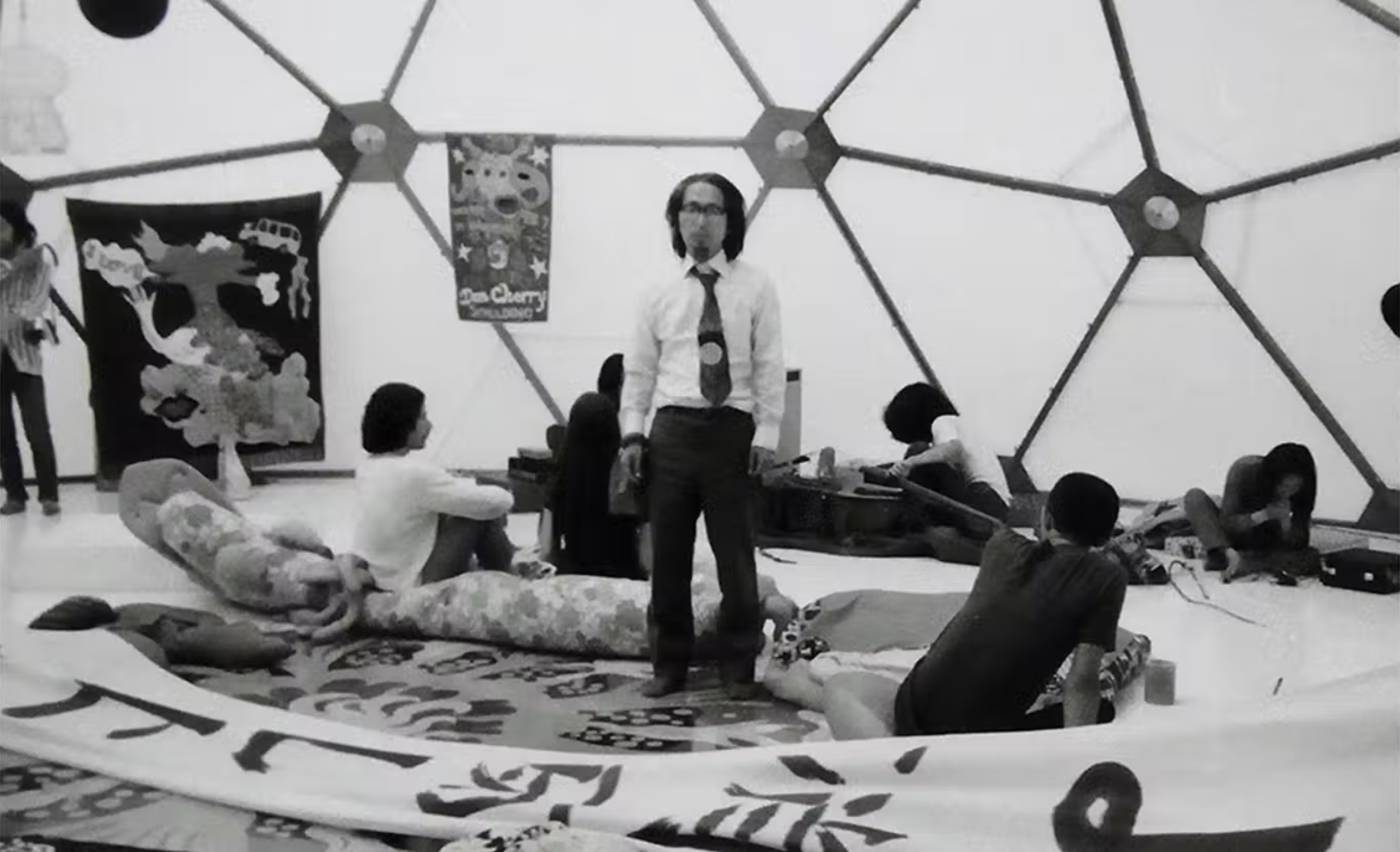
Yutaka Matsuzawa
Utopia & Visions, 1971, Moderna Museet in Stockholm. Photography by Kumiko Matsuzawa
Yutaka Matsuzawa
Born in 1922 in Shimosuwa, Nagano Prefecture, Japan. Graduated from Waseda University in 1946 with a degree in architecture.
In 1949 Matsuzawa published the poetry book Chijo no Fumetsu (Immortality on the Earth), and the following year he formed the poetry and art group RATI. In 1953 he showed work in the 5th Yomiuri Independent exhibition, and in 1954 he formed Alpha Geijutsu Jin (Alpha Art Group). In 1955 he went to Wisconsin, USA on a Fulbright exchange professorship, and he returned to Japan in 1957. In 1960 he presented Meaning of Psi: In Reference to Heisenberg’s Cosmic Equation at the 12th Yomiuri Independent exhibition (Tokyo Metropolitan Art Museum) and in Development of Surrealist Paintings, National Museum of Modern Art, Tokyo. His journey into conceptual art began on June 1, 1964, when he received a revelation to “Vanish all the objects.” He became an instructor at the Gendaishichō-sha Bigakkō art school’s workshop in 1970. The same year he participated in the 10th Tokyo Biennale: “Between Human and Matter,” and held the exhibition Nirvana: For the Final Art at Kyoto Municipal Museum of Art. After constructing a meditation platform at Sensui-iri on Mt. Misayama, he became increasingly active in the context of the Free Commune. Matsuzawa participated in the Venice Biennale in 1976 and the Sao Paolo Biennale in 1977. He spent almost his entire life in Shimosuwa, deepening his philosophical explorations in the space that influential art critic, poet and artist Shūzō Takiguchi named “Psi Room.”
Written by Shūhei Hosoya, translated by Colin Smith
松澤宥(まつざわ・ゆたか)
1922年、長野県諏訪郡下諏訪町生まれ。1946年、早稲田大学理工学部建築学科を卒業。
1949年、詩集『地上の不滅』を刊行。翌年に〈RATIの会〉を発足する。1953年、第5回読売アンデパンダン展に出品。翌年に下諏訪にて〈アルファ芸術陣〉を発足する。1955年、ウィスコンシン州立大学よりフルブライト交換教授として招聘される。57年に帰国。1960年、「第12回読売アンデパンダン展」(東京都美術館)および「超現実絵画の展開展」(東京国立近代美術館)に《プサイの意味—ハイゼンベルグ宇宙方程式によせて》を出展する。1964年6月1日、「オブジェを消せ」の啓示を受け、観念芸術を創始。1970年、現代思潮社・美学校「美術演習」講師となる。同年、「第10回日本国際美術展 人間と物質」に出品したほか、「ニルヴァーナ 最終美術のために」(京都市美術館)を開催する。御射山(みさやま)に「泉水入瞑想台」を完成させ、以降、「フリー・コミューン」の活動を展開する。1976年にヴェネチア・ビエンナーレ、1977年にサンパウロ・ビエンナーレに参加。生涯のほとんどを下諏訪で過ごし、瀧口修造のよって命名されたアトリエ「プサイの部屋」で思索を深めた。
